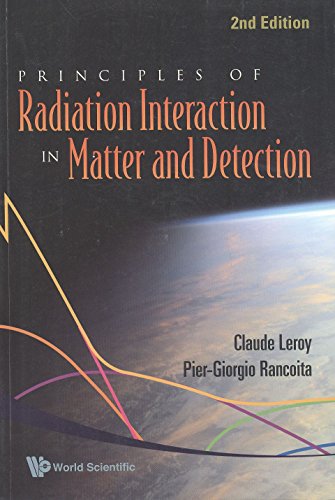Principles Of Radiation Interaction In Matter And Detection pdf download
Par benton jason le vendredi, juin 10 2016, 23:26 - Lien permanent
Principles Of Radiation Interaction In Matter And Detection. Leroy C., Rancoita P. G.

Principles.Of.Radiation.Interaction.In.Matter.And.Detection.pdf
ISBN: 9812818278,9789812818270 | 951 pages | 24 Mb

Principles Of Radiation Interaction In Matter And Detection Leroy C., Rancoita P. G.
Publisher: WS
Of the universe , as some do, inferring the existence of stuff that cannot be detected by telescopes or antennae or the other ways in which we presently can interact with the great beyond outside our solar system, seems hardly remarkable. These robust observations combine If dark matter is indeed a WIMP, it would interact so feebly with regular matter that we would have been able to detect it only with the generation of dark matter experiments that are just now coming on stream. Dark matter particles are also usually very scattered and do not interact with each other. Written by: However, they can still be indirectly detected through their interaction with matter around their boundaries. For example, gas and dust around a black hole emit X-rays as they spiral inwards. Baryonic matter can, in principle, be detected through the electromagnetic radiation it releases. Dark matter, dark energy, dark money, dark markets, dark biomass, dark lexicon, dark genome: scientists seem to add dark to any influential phenomenon that is poorly understood and somehow obscured from direct perception. Filaments between interacting clusters", published in the journal Astronomy & Astrophysics. The Planck Satellite has observed a very unique emission of radio radiation from the center of the Milky Way, moving scientists closer than ever to a solution to the origin of dark matter. This standard model of cosmology is supported by a lot of data, including the pervasive radiation field of the universe, the distribution of galaxies in the sky, and colliding clusters of galaxies. Principles Of Radiation Interaction In Matter And Detection. How Big Are the Largest Black Holes and How Do Astronomers Detect Them? The image shows emission from the center of the Milky Way, detected by PLANCK satellite. Ultraviolet (UV)-visible spectrometers are used to analyze the interactions between radiation and matter in the UV-visible region of the electromagnetic spectrum. When matter and According to MIT's Samuel Ting, a physicist and the Alpha Magnetic Spectrometer's principle investigator, the first results will be published in two weeks, and “it won't be a minor discovery”; the paper has so far passed 30 revisions and is finally set for publishing. Some physics theories suggest that dark matter is made of WIMPS (weakly interacting massive particles), a class of particles that are their own antimatter partner particles. Astronomers have observed stars in other galaxies orbiting particularly bright regions containing highly concentrated gas and emitting unusually large amounts of radiation.